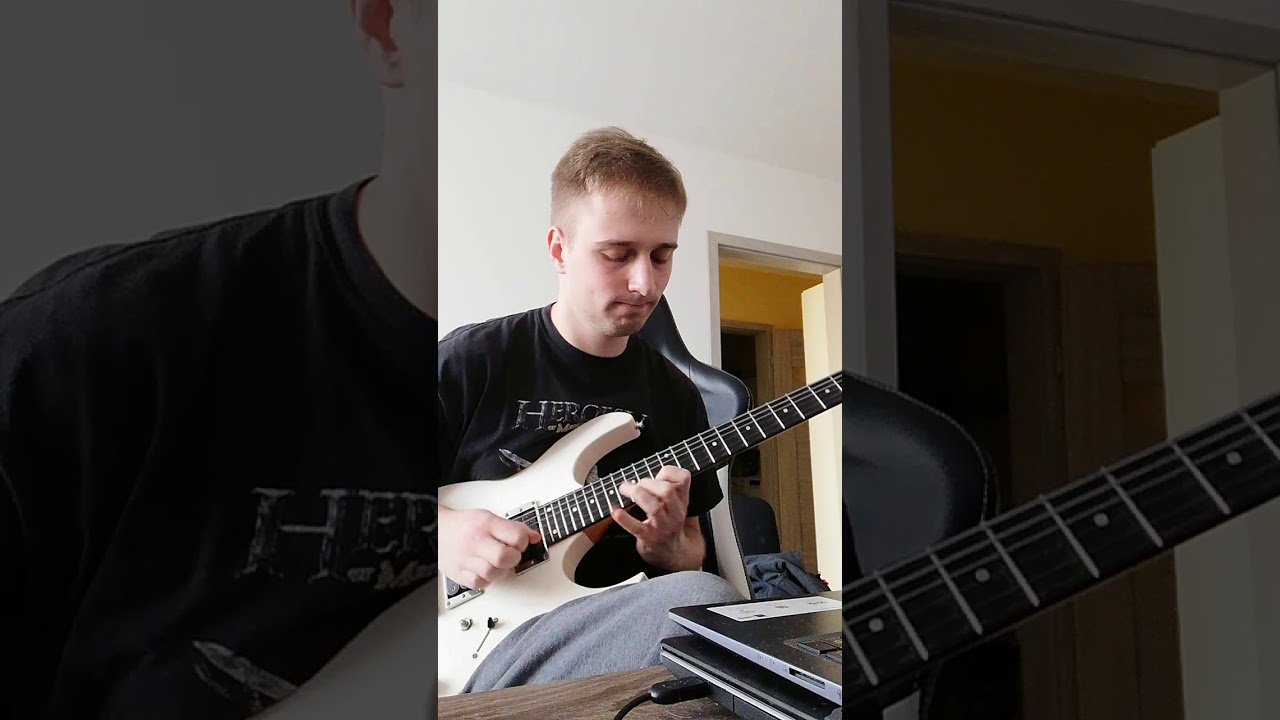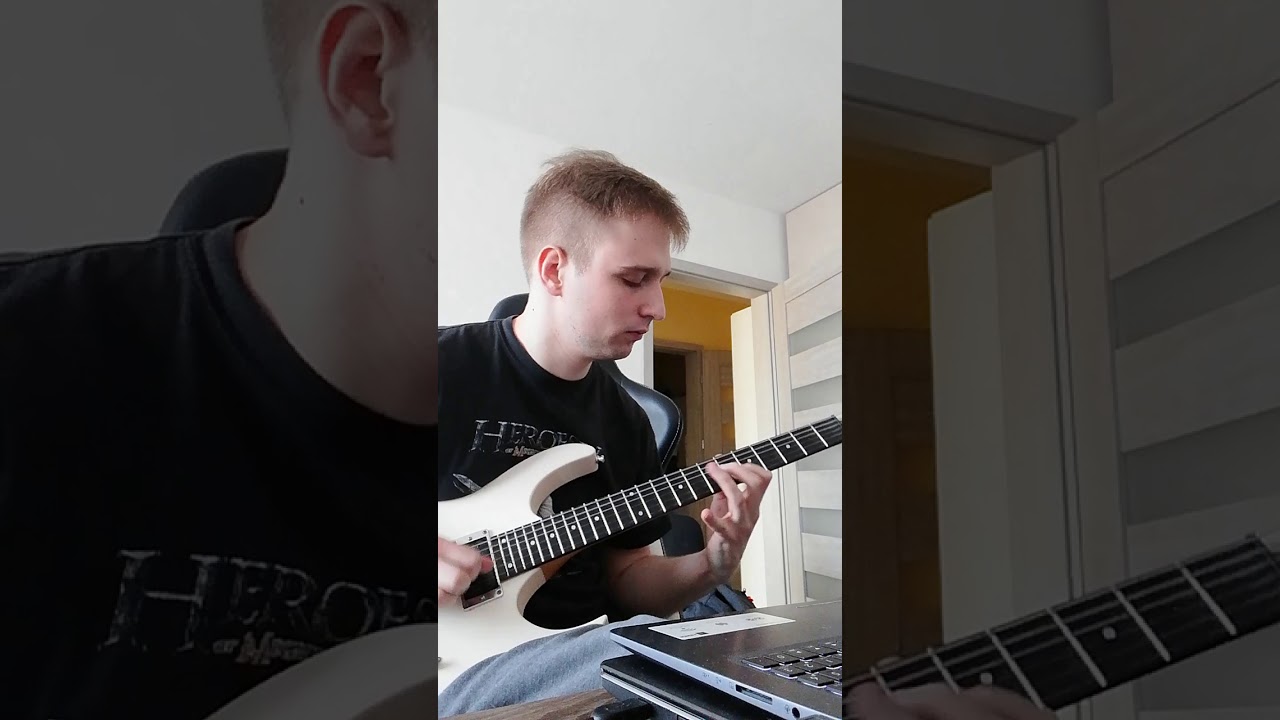Was speaking to Justin Sandercoe on email who is incorporating more picking-specific stuff into his courses. Justin is great and has always been super supportive of what we’re doing here. If you found your way to us through him, many thanks!
Anyway, he asked what he prefaced as a “stupid question” for teaching students to play three-note-per-string scales, since doing so obviously involves both upstroke and downstroke string changes. How can you do that with single escape motions? Well, not a stupid question at all. And in fact, basically ties together everything we’ve been working on for the last 6 or so years.
My response to him was the following overview, which also pretty much encapsulates what we know about scale playing and moreover what we know about learning complicated physical skills like picking technique. This will all make its way into lessons in the Primer at some point down the line. But here’s a potentially helpful quick and dirty overview in textual form:
Playing Scales With Alternate Picking
Three note per string scale playing with alternate picking is an interesting question. It’s sort of universally regarded as an “important” thing to do, and yet, when you film great players, very few of the famous players we grew up listening to can actually do it fast. Very quicky, here are the options:
- Don’t play scales at all (Eric Johnson, many others)
- Only play scale patterns where the last note always fits your escape motion (John Mclaughlin, Gypsy guitarists, George Benson, Shawn Lane most sequences, most people in general)
- Use single escape motion and “swipe” / hit the string every other string change. Only works in one direction, makes swiping noise. (Di Meola descending, Michael Angelo Batio descending, and many, many bedroom shredders)
- Use single escape motion like wrist or elbow and make additional forearm “helper” motion every 6th note to get over the string. Most common approach among people who can actually do 3nps with pure alternate. (Vinnie Moore when ascending, Batio when ascending, Andy Wood when ascending, Shawn Lane looping descending sixes, lots and lots of others)
- Same as method 4, but use wrist for both primary motion and “helper” motion, just moving in slightly different directions. Works at all speeds but only works for wrist players, because wrist is the only joint that can move in multiple directions. (Paul Gilbert, Anton Oparin, Andy Wood when descending, Al Di Meola when not swiping)
- Use double escape motion where all pickstrokes escape. Only works up to medium fast speeds. (Molly tuttle, Olli Soikkeli)
- Use double escape at medium speeds, at fast speeds only escape at string change, middle note stays trapped. Motion is still “double escape”, just choosing the “above the string”, “near the string”, and “below the string” sections of the range of motion. Looks very similar to method 5 but also works with other joints like forearm-wrist. (Olli Soikkeli)
Methods 4 - 7 are the true “pure alternate” methods. As you can see, they’re all physically complicated. We used to call method 4 “two-way pickslanting”, because the use of the forearm makes the pick appear to turn. But the teaching hit rate was not high because students would hyper-focus on “changing the slant” of the pick (however they did that), instead of making the correct picking motions.
So then we started teaching them to explicitly perform the forearm motion that causes the “slant change”. This lead to overdoing the helper motion and looking awkward / slow. Players who learned this method, like Andy Wood and Vinnie Moore, don’t think about the joint motions, even when they are combining multiple motions, so the motions are graceful and fast. Further, this teaching approach was still unclear since it didn’t mention which motions to use when not doing the forearm motion. Finally, it didn’t explain method 5 at all, where no forearm is used, leading to further confusion as to how certain players like Andy Wood or Paul Gilbert were “changing the slant”, i.e. it wasn’t actually happening.
So, what do we now think is the best method to learn to pick a scale with pure alternate picking?
Don’t try to “do” any specific method of the numbered methods. Instead, make any alternate picking motion that feels smooth. Go fast and sloppy at first and let mistakes happen, to ensure there is no stringhopping. Mistakes are preferable to stringhopping. By slowing down a very small amount from the fast speeds, you can learn to feel the mistakes and make slightly different motions, while still avoiding stringhopping. This includes learning any of the numbered methods, “helper” motion to get over the string, whatever — but done by feel not consciously. It also includes hand synchronization and aiming for the correct correct notes. Everything is learned together. Ping-pong between these slightly slower speeds and fast speeds to check if the fastest ones are cleaning up as a result of the slightly slower playing. The cleaner it gets, the slower you can go while avoiding hopping, to feel and memorize the correctness of the motions.
There is not a defined phase of the process where you go super slow for many thousands of “reps” to “make it permanent”. Instead, memorization occurs as part of the ping-pong process of figuring out the joint motions. This process already involves “reps”, albeit not in the sense that traditional practice recommends. These are many repeated attempts to play correctly, with most attempts having mistakes and only a few succeeding. Staying in the “mistake zone” provides the feedback necessary for learning when the joint motion is correct. By the time you get all the mistakes ironed out, the technique is already permanent. From this point on, only minimal regular playing is required to maintain.
Note this this isn’t just the process for learning scale playing, it’s the process for building a complete picking technique with any type of motion. The reason is that nobody learns a single exercise in isolation, since there isn’t enough feedback from that one pattern. Picking technique involves a multitude of slightly different motion combinations, so a variety of phrases is needed to capture the tactile feedback. Feedback from one phrase helps the others. Ping-ponging and figuring out the motions is done by feel and can take one to two years to fill out enough motions and variations to have a full musical vocabulary.
Not the simplest answer, I know. But at this point we think this is how most all complex motor skills are acquired, and how the “natural” guitar heroes all learned complex tasks like picking technique. Knowing consciously what the correct motions are supposed to look like and feel like can speed the process because you can look at your technique or film yourself, recognize when it’s working, and not waste time on dead ends. But the learning itself still happens by feel, so even non-technical players can be guided through this process by learning to notice mistakes and slow down slightly to try and figure out a motion that avoids them.




